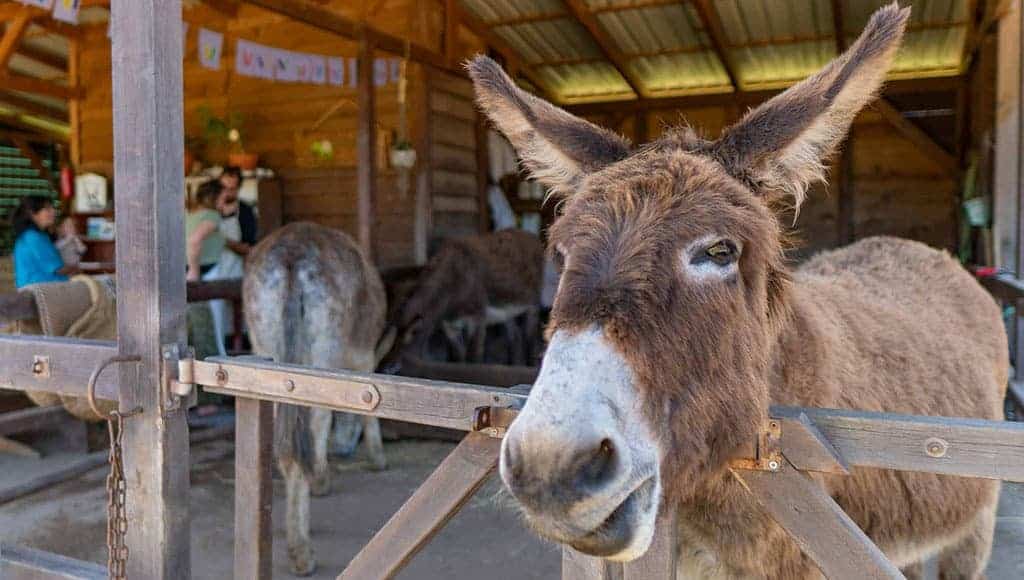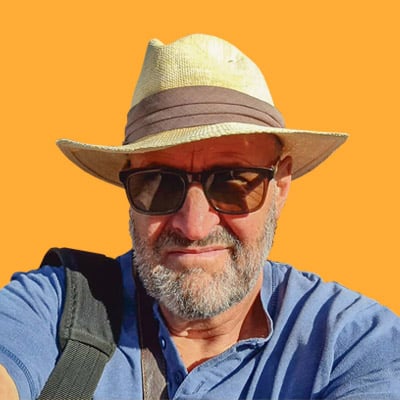There’s something ridiculously lovable about donkeys. They just look awkward, like the goofy little brother of a handsome horse.
For thousands of years, they were used as a beast of burden, but in today’s mechanized world, they can become beloved pets. And they freely return that love. They make a great pet because they are sociable and have so much personality.

Donkeys have always faithfully stood by their humans, working the fields and hauling the goods. They were once a part of everyday life in Portugal, but they have since been replaced by diesel tractors and trucks. So now, donkeys no longer have a practical role in a world ruled by humans. Consequently, their numbers are dwindling rapidly, and it is projected that, tragically, they will be extinct within 50 years.

One reason that donkey ownership is not popular anymore is that you need at least an acre of land for the donkey to roam and graze. You also need other animals and people to keep them company because they are very social. And, of course, there is the cost. Between food and health care, a donkey can run about €1,000 per year. Wait a minute… I know a lot of people who spend that much on a dog or a cat!

Donkeys require a lot of attention, which also sounds to me just like a dog. They occasionally bray, which is noisy. Well, I’m pretty sure that we all know that dogs can also be noisy. Anyway, donkey braying is so much funnier than dogs barking.

Question: what is the difference between a donkey, a burro, and an ass? Answer: they are all one in the same. In Portuguese, a donkey is called a burro. The term “ass” is correct, but not in common use, for obvious reasons. They can all bring great joy into our lives.

Here’s a little joke: A donkey, a burro, and an ass walk into a bar. The bartender says, “Hi guys, why the long faces?” All joking aside, I recently was thrilled to find an opportunity to meet some donkeys first hand.

On an old farm, near the beautiful western town of Aljezur, there is a project called “Burros & Artes“. With the backdrop of natural green rolling Algarve hills, visitors of all ages are welcome to share in the joy of donkeys. Since 2009, Sofia Metzinger and Elsa Ribeiro have offered donkey tours, walks and experiences for all hikers, families, and adventure seekers.

Another nature explorer and lover of donkeys, Stefanie Maier joined the group recently, to also assist with donkey activities.
It was such fun when I drove into the property to see healthy, happy, and furry donkeys freely roaming around and grazing on thick grass. We are all so used to seeing them depicted as working animals, pulling a plough or a cart, or turning the wheel of a machine. To see them just enjoying life has a different sensation, it’s very liberating. They were playful with each other and with the people.

“They are sweet, gentle, and affectionate,” said Sofia while petting one of the burros. “Each of them has a distinct personality, and they like to be treated in certain ways. If you treat them well, they are great companions.”

Today, there are some visitors at Burros & Artes; a couple on holiday, and myself. We have signed up to go on a two-hour hike with some donkeys. Stefanie picks out five of the 15 donkeys on site, and we brush their thick coats and begin talking to them. They clearly enjoy the attention, giving donkey smiles and nudging us with affection.

We learn how to put harnesses on four of them, and they offer little resistance. Two of them are also fitted with blankets and saddle-baskets. Only a child can actually ride on the back of a donkey. The maximum safe load on a donkey’s back is 40kg. I would require at least two or three donkeys put together (probably not allowed).
“Donkeys are gentle and friendly, and they can be adventurous,” said Stefanie, “when we are walking with them, they will usually follow your lead, but sometimes they decide where to go. They know the trails and can’t get lost. It’s so much fun hiking with them. I love them because they are very patient and forgiving.”

As we walk along at a moderate pace, the donkeys occasionally require a little coaxing to resist the temptation to stop and graze a bit. We all pause at a little pond for a brief rest, enjoying a cool spring breeze while goldfinches chatter above.
Meanwhile, back at the ranch, pottery and ceramics instructor André da Costa is preparing a pottery class for the walkers when they return. André teaches would-be potters of all ages. The philosophy of Burros & Artes is to combine the love of nature with art.
“There is a connection between working with clay, and walking with the burros,” says André. “Like a burro, clay has a mind of its own. Both things need patience and persuasion. Our guests enjoy a peaceful time in the fresh air, and they learn some skills. We have a lot of fun.”
So, if you are looking for a fantastic multi-generational activity, look no further. I can positively guarantee a good time. To learn more about Burros & Artes, check out their excellent website at www.burrosartes.com
By ERIC ROTH
|| features@portugalresident.com
Eric Roth is a lifelong photojournalist who has recently emigrated from Boston, USA to the Algarve. He loves nature and wildlife. 926 742 687 | ericrothphoto@gmail.com




















